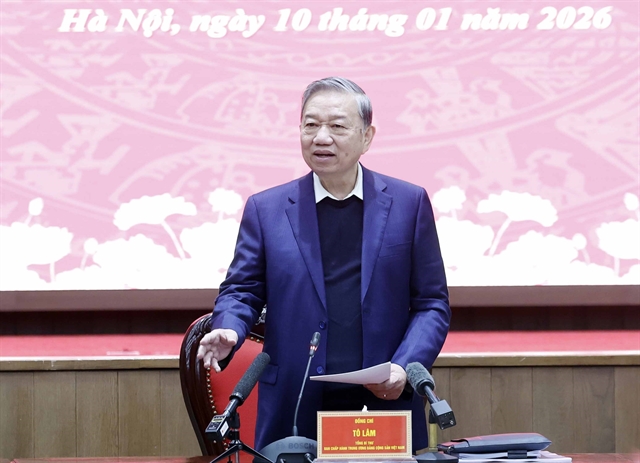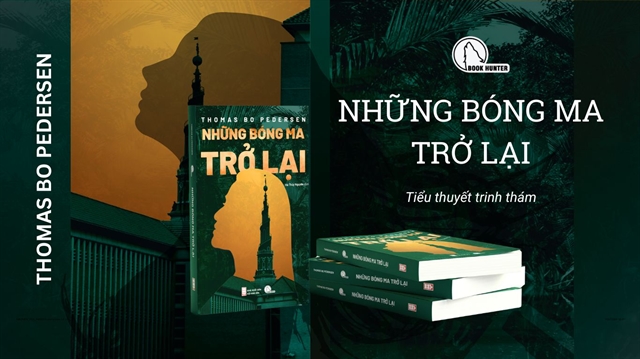 Life & Style
Life & Style

Recipes from the Nguyễn Dynasty (1802-1945) in Huế provide us with an idea of the type of tea and wine consumed by the royals in the former imperial capital city.
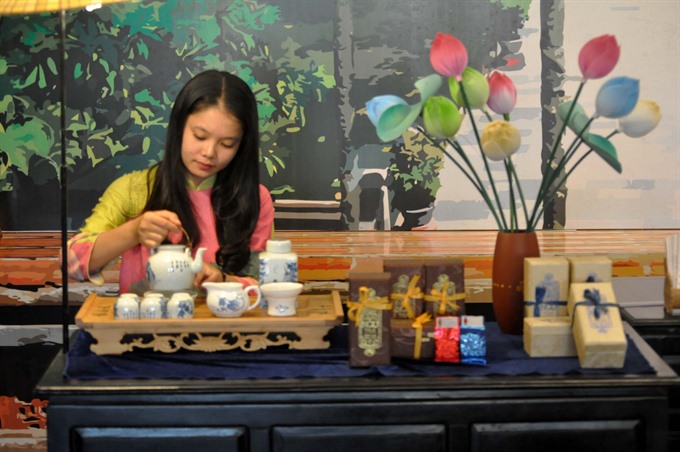 |
| Revival: Serving royal tea at Lục Bộ in Huế. — VNS Photo Phước Bửu |
by Phước Bửu
Recipes from the Nguyễn Dynasty (1802-1945) in Huế provide us with an idea of the type of tea and wine consumed by the royals in the former imperial capital city.
The recipes are now enjoiying a revival and renewed interest.
Tea served to kings was not just tea. For royal family members it was a treat, with various herbal ingredients added.
Thượng viện ngự trà, for example, was a royal tea prepared by the monarchic agency specialising in teas – Thượng Trà Viện. It is made from 11 ingredients: jasmine flower, longan, goji berry, dry tangerine peel, licorice root, jujube, pagoda tree leaves, daisy flower, lotus plumule, dry senna seed and of course the key ingredient – tea.
All are also used as ingredients for herbal medicine. While jasmine and lotus plumule are used to lower body temperature, goji berry and jujube are said to alleviate stress and pain. It is used to treat ulcers, among othetr things. Licorice root is said to boost the immune system.
According to herbal physician Phan Tấn Tô, the mixture of those 11 ingredients creates a harmonious whole because the herbs do not counter each others’ effects.
“This kind of tea has number of benefits, including internal heat reduction, liver coolant, lowering blood pressure and curing insomnia,” he said.
“Dishes served to kings were always nutritious, while tea and wine included herbal ingredients and were served like medicine. All are safe for one’s health.
“Tea recipes were prepared by Thượng Trà Viện then they were submitted to Thái Y Viện, which gathered the country’s leading herbal physicians brought together as a medical team in the royal palace for careful checks of the benefits and side effects of every substances in the mixed tea."
Tô says the recipes were documented, signed and sealed by at least two royal herbal physicians. The physician Tô found these recipes in the dynasty’s royal records and in 2013 he worked with the Huế Monuments Conservation Centre, the governmental organisation that manages almost all the Nguyễn Dynasty’s legacy available in Huế, to revive some of the tea recipes.
Ingredients for the emperors’ tea recipes are available today, making the tea products as good as they were in the service of kings, said Tô.
Preparation of Tịnh Tâm liên hoa ngự trà (royal lotus tea) took a week of steeping in natural fragrance of lotus flowers before it was served to kings.
Tịnh Tâm was a pond created inside the citadel’s territory for the royal family’s recreation. The lotus that grew in the pond was considered to have the nicest fragrance of all lotus species.
Tea leaves were placed in the middle of each lotus flower in the early morning and the petals held the tea through its aromatizing process. After the tea absorbed the lotus fragrance, it was dried in a mixture of lotus stamens to make royal lotus tea.
Today’s version cannot be as pure since lotus varieties have been changed and the environment is different.
But Tô said today’s version has the same benefits, which are to reduce cholesterol levels, prevent cancer and bost the immune system of frequent drinkers. He added that tea used in the process is grown in organic farms in northern Thái Nguyên Province and harvested selectively. — VNS
Venues serve and sell the teas |
- Cung Trường Sanh (Longevity Palace) inside Huế Imperial City. - Lục Bộ at #79 Nguyễn Chí Diễu Str., Huế City. |
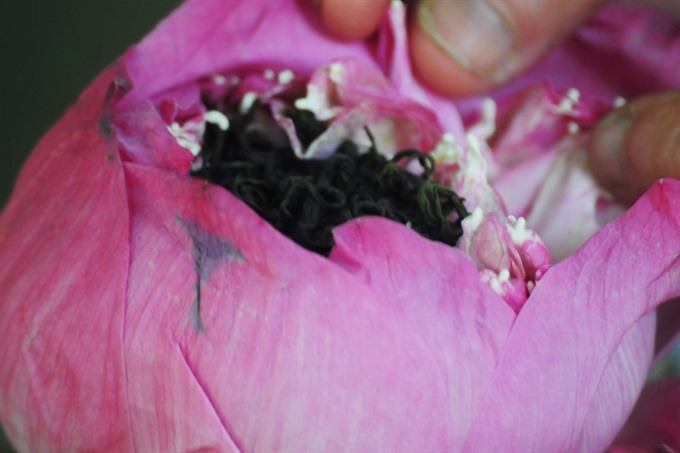 |
| Fragrance: Tea placed inside a lotus flower to make royal lotus tea. — VNS Photo Phước Bửu |
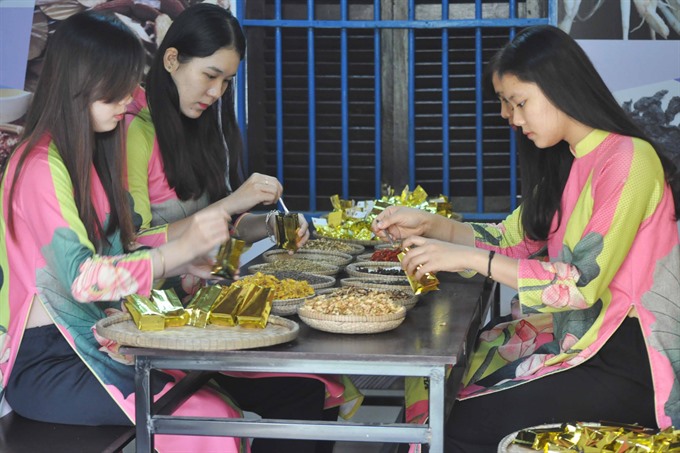 |
| Organically grown: Packaging of lotus tea. — VNS Photo Phước Bửu |
 |
| Medicinal value: Lotus flowers play a key role in the production process of Huế royal teas. — VNS Photo Phước Bửu |

